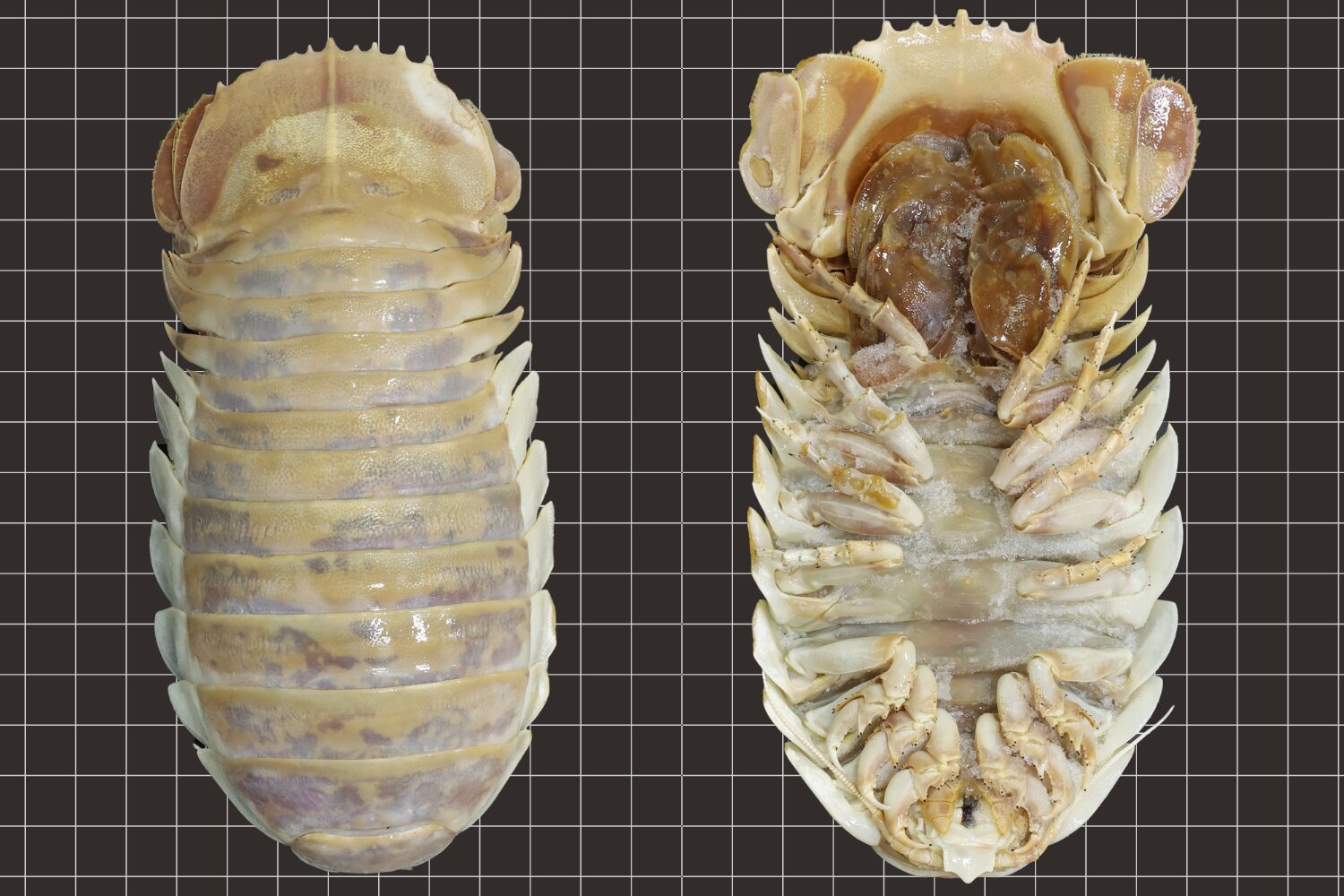

The Chicxulub crater off of Mexico’s Yucatán Peninsula is mostly associated with the end of the dinosaurs. This six-mile wide impact crater is where the asteroid that wiped out the Ankylosaurus, T-rex, Triceratops, and many other dinosaurs collided into the earth 66 million years ago. But, life still prevails in the giant hole in the ocean floor some 2,500 feet below the Gulf of Mexico.
Researchers have discovered a new species of the mysterious deep-sea isopod Bathonymus in the famous underwater crater. Called Bathonymus yucatanensis, or B. yucatanensis for short, these crustaceans dwell in the deepest part of the ocean called the the benthic zone. The 10-inch long invertebrates are closely related to the common woodlice, pillbugs, and roly polies found on land and distantly related to shrimp and lobster. Scientists believe that there are about 10,000 different isopod species, with about half of them living in the ocean.
A team of Taiwanese, Japanese, and Australian researchers discovered the species in the crater site off Mexico’s east coast, after capturing them in a baited trap in 2017. Their findings, published in the Journal of Natural History on August 9th, reveal that B. yucatanensis is pretty big by isopod standards, with 14 legs and measuring about 25 times longer than the average woodlouse. Its size is another example of what scientists called deep-sea gigantism, when creatures that dwell closer to the ocean floor tend to grow bigger than their terrestrial relatives.
[Related: The Great Pacific Garbage Patch is a ‘raft of life’ for animals in the open ocean.]
While they may look a little scary, the crawling creatures are completely harmless to humans. B. yucatanensis has a creamy-yellow shell that makes it stand out more from its other similar species found in the region. It’s the third species of Bathonymus found near the Yucatán: B. giganteus was discovered in 1879 and B. maxeyorum was described in 2016.
“Compared to B. giganteus, B. yucatanensis has more slender body proportions and is shorter in total length,” remarked the paper’s authors. Additionally, the newly discovered specimen has a more slender body and thoracic limbs, according to the new paper.
Now, the gigantic rolly polly-like animal is being studied far from home in the Enoshima Aquarium in Japan, but continues to inspire isopod lovers the world over.
